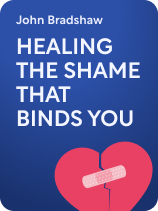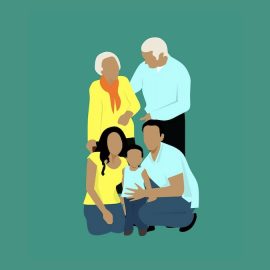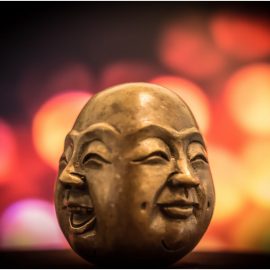

This article is an excerpt from the Shortform book guide to "Healing the Shame that Binds You" by John Bradshaw. Shortform has the world's best summaries and analyses of books you should be reading.
Like this article? Sign up for a free trial here.
What causes toxic shame to develop in childhood? How do early experiences shape our emotional responses and relationships later in life?
The connection between toxic shame and childhood trauma runs deep, affecting how we view ourselves and interact with others. Three specific childhood experiences contribute to toxic shame development, and understanding these patterns can help break the cycle of emotional distress.
Keep reading to discover the crucial experiences that shape our emotional health.
Toxic Shame and Childhood Trauma
Bradshaw explains the connection between toxic shame and childhood trauma, contending that there are three types of childhood experiences that cause toxic shame. Toxic shame forms when all three of these experiences are not only present but regularly reinforced during childhood—they’re part of your daily life growing up.
(Shortform note: In Complex PTSD, psychotherapist Pete Walker explains that recurring childhood experiences of abuse and abandonment can also cause complex post-traumatic stress disorder (CPTSD). The symptoms of CPTSD are similar to the ones Bradshaw says define toxic shame—shame, low self-worth, disconnection from self and others, and relationship problems.)
Experience 1: Toxic Role Models
Children learn how to think, feel, and behave by watching their caregivers—they teach us how to do crucial things like disagree, communicate our feelings and needs, cope with stress, form boundaries, and more. However, Bradshaw explains that toxically shamed adults are often unable to healthily do these things—instead, they model shame-based behaviors.
As a result, children of toxically shamed adults not only absorb their caregivers’ sources of shame, but their shame-based behaviors as well—they’re taught toxic methods of interacting with themselves, the world, and other people. For example, if a parent feels shame about their weight, their child will learn to feel shame regarding their weight or body image. If two parents only disagree by yelling at each other, their child will learn to handle contention with emotional outbursts.
| How to Be a Healthy Role Model Bradshaw explains that children learn how to behave by mimicking the behavior their caregivers model—to raise a healthy child, parents must teach them healthy ways of doing important things like communicating, coping, and setting boundaries. In Daring Greatly, Brown agrees, adding some tips on how to support yourself so you can model healthy behavior for your child, and including signs to look for to tell if they’re on the right track. Brown recommends the following methods to support yourself in your journey toward healthy behavior: 1) Acknowledge that you’re learning and growing as a person just as much as your child is, 2) identify the difference between your values and the values you’re displaying through your actions so you can ensure your behavior teaches your child the right lessons, and 3) demonstrate vulnerability to teach your child that it’s OK to be imperfect. You can tell whether you and your child are on the right track by looking for the following signs: 1) Your child loves themselves and expresses compassion for others, 2) your child handles change with courage and resilience, and 3) your child accepts their flaws and areas in which they feel vulnerable. |
Experience 2: Abandonment
Bradshaw explains that abandonment is any situation in which a child’s feelings, needs, and desires are neglected. This can come in many forms, including physical parental absence, abuse, or role reversal—for example, a parent relying on their child for emotional care instead of the other way around. Abandonment leads to toxic shame because it teaches children that their emotions are shameful and unworthy of attention.
Since abandoned children are taught that their authentic selves—their feelings, needs, and desires—are unworthy, they end up taking on certain relational roles to either avoid shame or gain acceptance from their family. For example, a child who is abused may learn to take on the role of a ghost—they’ll minimize themselves and keep their thoughts and feelings quiet to avoid drawing attention and causing problems.
| Abandonment Trauma & Relationships Abandonment is a form of trauma, and psychologists explain that people who experience childhood abandonment often develop abandonment trauma, which shares many symptoms of toxic shame—especially relational issues. In particular, psychologists note that people with abandonment trauma tend to develop one of three unhealthy attachment styles that contribute to relational issues: anxious attachment, avoidant attachment, or disorganized attachment. Each of these attachment styles can form as a response to childhood abandonment, and research shows that your attachment style is largely correlated to the type of trauma you experienced. Those with anxious attachment (also called preoccupied attachment) tend to be clingy and insecure and seek constant reassurance from partners out of fear of being abandoned. This attachment style tends to develop from having inconsistent caregivers—since the child can’t predict when or how their parent would respond, they learn that abandonment is possible at any moment. Those with avoidant (or dismissive) attachment tend to crave independence and deny the need for close intimate relationships. This attachment style tends to develop when the child’s caregivers are consistently unresponsive to their needs or the child experiences forms of physical abuse—they learn not to rely on others and to distance themselves so they can’t be hurt.Those with disorganized (or fearful) attachment have a coexisting desire for and fear of intimacy, which causes them to get close to people and then distance themselves—it’s a mixture of anxious and avoidant attachment. This most often correlates with inconsistent caregivers or consistent neglect. |
Experience 3: Imprinted Shame Experiences
Imprinted shame experiences are memories of shame that become ingrained into your brain and form triggers for shame in the future. They’re created when a child has a shameful experience that causes them pain and suffering which goes unresolved. The unresolved pain then “imprints” the experience into their memory by connecting it to certain auditory or visual elements that were present during the experience—for example a word, certain tone of voice, facial expression, or symbol.
Moving forward, experiences of shame that involve common elements from the initial shame experience will trigger the original memory and pain. The new experience will then be linked to the initial experience through the common elements. Once this happens, it’ll be stored in a collective “folder” in their brain where all shameful experiences that share any of those elements are stored. The bigger that folder gets, the more impact toxic shame will have on their life.
For example, imagine a child is at a doctor’s appointment and feels ashamed of her size—the doctor calls her a “big girl” and her mother says she needs to lose weight to be more girly. Moving forward, the child will feel shame anytime someone calls her “big” or mentions her appetite or femininity, because these elements will be linked to the original shame experience.
| Trauma, Flashbacks, and Response In The Body Keeps the Score, Bessel van der Kolk also discusses how trauma and shame imprint into our minds and elaborates on certain aspects of Bradshaw’s discussion. For example, van der Kolk explains that because traumatic experiences are so overwhelming, our mind must break them into fragments of sights, sounds, sensations, emotions, and thoughts to process them. As a result, re-experiencing any fragment that was present during the initial experience can trigger us. This implies that shame experiences can imprint with more than just visual or auditory elements. Further, van der Kolk explains that our imprints often cause us to misinterpret neutral stimuli as being dangerous because they control our imagination. This means that many of the experiences that trigger memories of past shame and add to that “shame folder” may not objectively be shameful—we just interpret them that way because it’s how our minds have been programmed to respond. This phenomenon was demonstrated by army veterans who were given the Rorschach test (an inkblot test): Whereas people who weren’t trauma survivors saw harmless images like animals, trauma survivors saw violent and disturbing images. Their trauma was so present in their minds that they automatically connected the ambiguous images to their trauma. |

———End of Preview———
Like what you just read? Read the rest of the world's best book summary and analysis of John Bradshaw's "Healing the Shame that Binds You" at Shortform.
Here's what you'll find in our full Healing the Shame that Binds You summary:
- How toxic shame develops and manifests in your life
- Why it’s important to externalize shame that’s internalized
- How to find happiness after expelling shame






